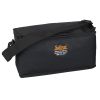Solinst Model 102M P4 Probe Mini Water Level Meter
Features
- Accurate, precise laser markings
- Narrow 4mm x 38mm probe weighing 0.35 oz (10g)
- Ideal for accessing narrow diameters
- Free ground shipping
- Expedited repair and warranty service
- Lifetime technical support
- More
Overview
The Solinst Model 102M P4 Probe Mini Water Level Meter is designed to measure groundwater levels in small diameter tubes and piezometers. A choice of two small diameter probe designs are attached to a narrow coaxial cable. The cable has a heavy-duty polyethylene jacket and stainless steel coaxial conductors for durability and strength. Permanent markings are precisely laser etched on the cable every 1/100 ft. or each millimeter.
Mechanics
A standard 9 volt battery, housed in an easy-access battery drawer, powers the Water Level Meter. When the probe enters water, a light and clearly audible buzzer are activated. The water level is then determined by taking a reading directly from the cable at the top of the well casing or borehole. A sensitivity control allows the buzzer to be turned off while in cascading water and ensures a clear signal in both high and low conductivity conditions.
- (1) Model 102M P4 Probe Mini Water Level Meter
In The News
Science for Science’s Sake: Monitoring Ocean Energy Availability and Gulf Stream Dynamics
Scientific research often begins with a question, sometimes driven by a specific goal or application, but many scientists believe in science for science’s sake. Marine environments and physical dynamics like the Gulf Stream are popular fields of research due to their complexity and importance, presenting a unique opportunity to learn more about previously unexplored phenomena. Environmental researchers, in particular, see the value in these ecosystems, but many also grew up with a passion for the natural world, and choosing a field that allows them to interact with and learn about the environment around us is an easy choice.
Read MoreResearch in the Reserve: Promoting Interdisciplinary Conservation at the Great Bay National Estuarine Research Reserve
On an early winter day in 1973, a helicopter buzzed over Durham, New Hampshire, just a few miles from the Atlantic Ocean. One of the helicopter’s guests, oil magnate Aristotle Onassis, owner of Olympic Refining, looked east of town and saw what he hoped would become the world’s largest oil refinery. Instead, he saw the Great Bay; thousands of acres of green coastal forest, mud flats, salt marshes, and estuarine tidal waters stretching over the land toward New Hampshire's small Eastern coastline. Onassis likely also saw a group of Durham residents staked out on the bay’s coast, ready for him to pass overhead. While out of place in the natural setting, an obvious message was spelled out in red paper: “Not Here.
Read MoreFloating Global New Ideas: Buoy-Enabled Research at Florida Agricultural and Mechanical University’s School of the Environment
Florida Agricultural and Mechanical University (FAMU), based in Tallahassee, Florida, is the highest-rated public Historically Black College or University in the United States. FAMU’s School of the Environment (FAMU-SOE) offers BS and BA degrees in Environmental Studies, and BS, MS, and Ph.D. degrees in Environmental Science, with specialisms available in areas including Environmental Policy and Risk Management, Aquatic and Terrestrial Ecology, and Biomolecular Sciences. In 2021, FAMU-SOE deployed a NexSens CB-450 buoy in Apalachee Bay, a key oyster farming area around 30 miles south of Tallahassee. The buoy has quickly been incorporated into the curriculum, providing environmental insights for student research, the community, and beyond. Dr.
Read More









